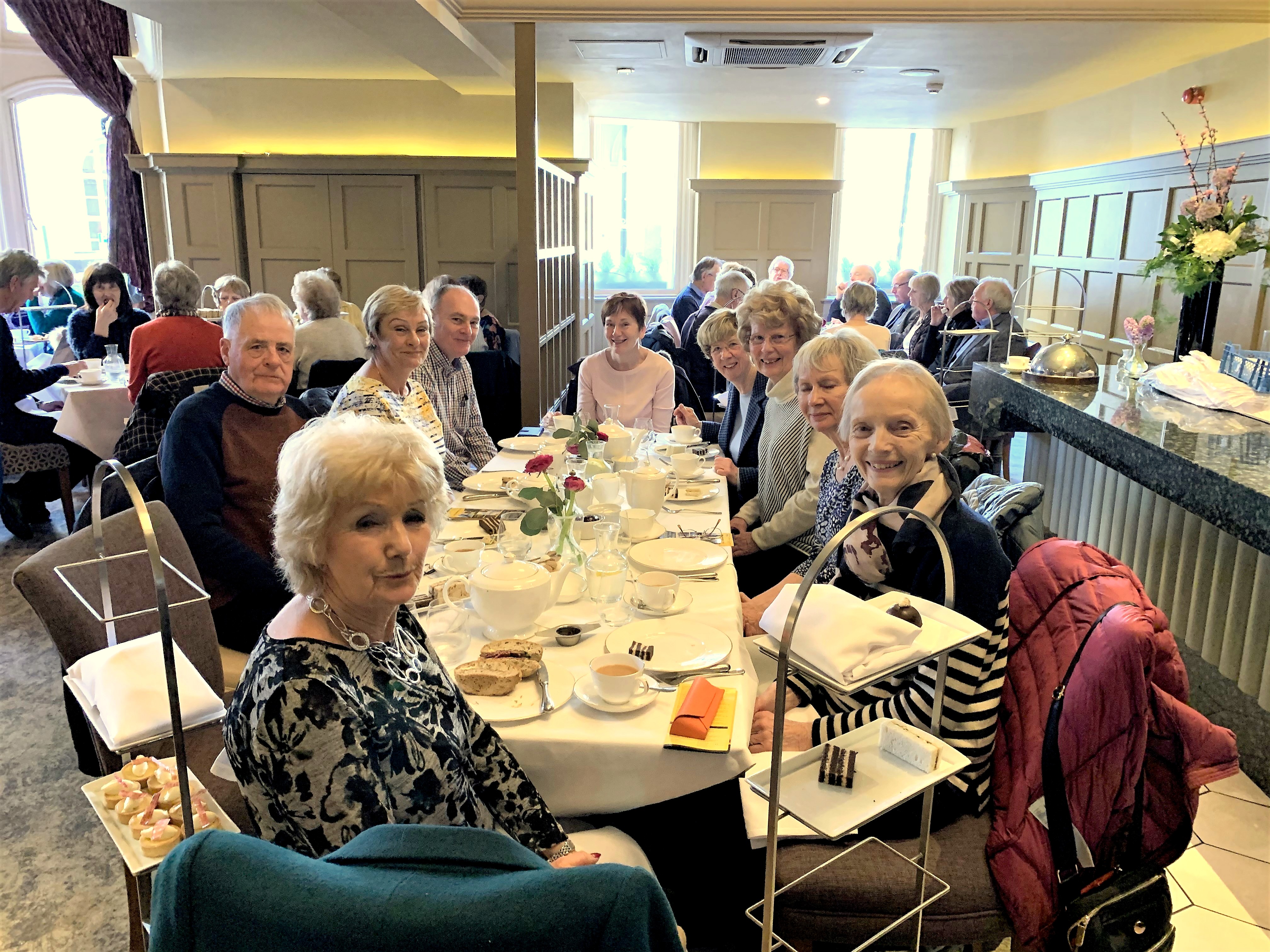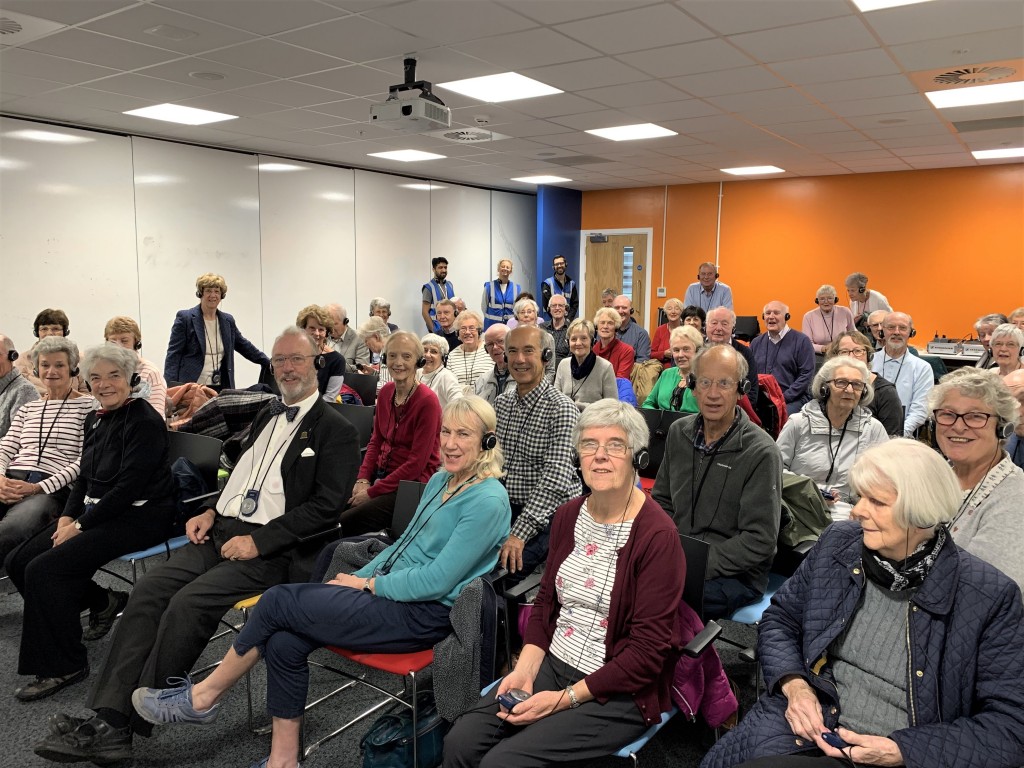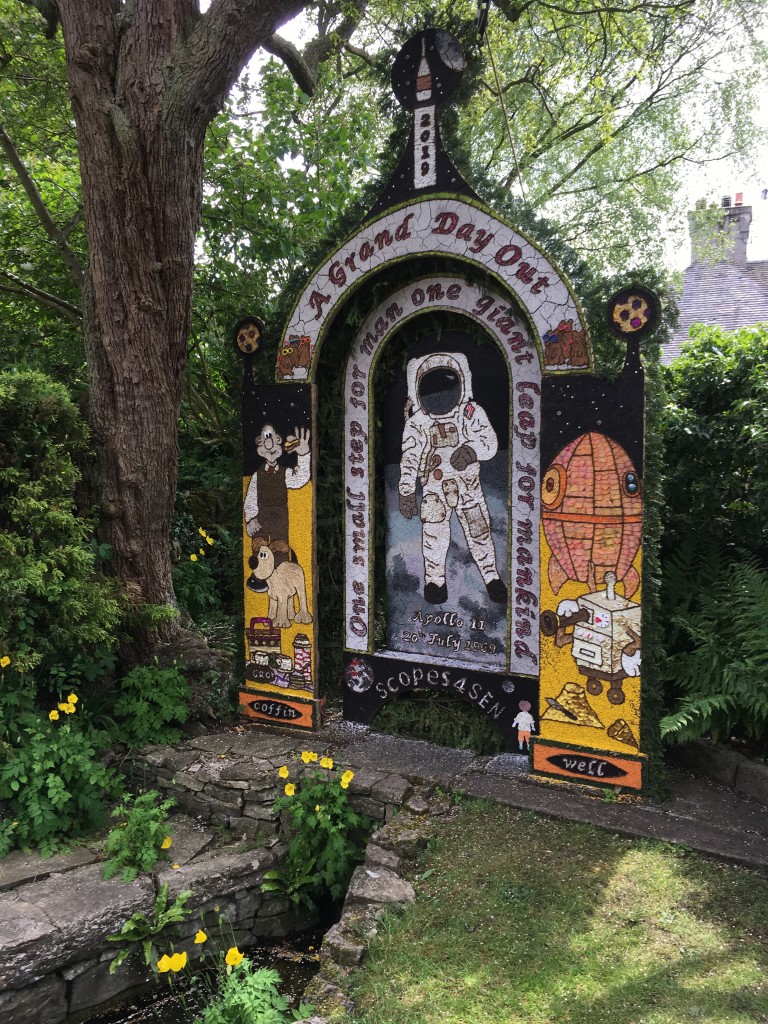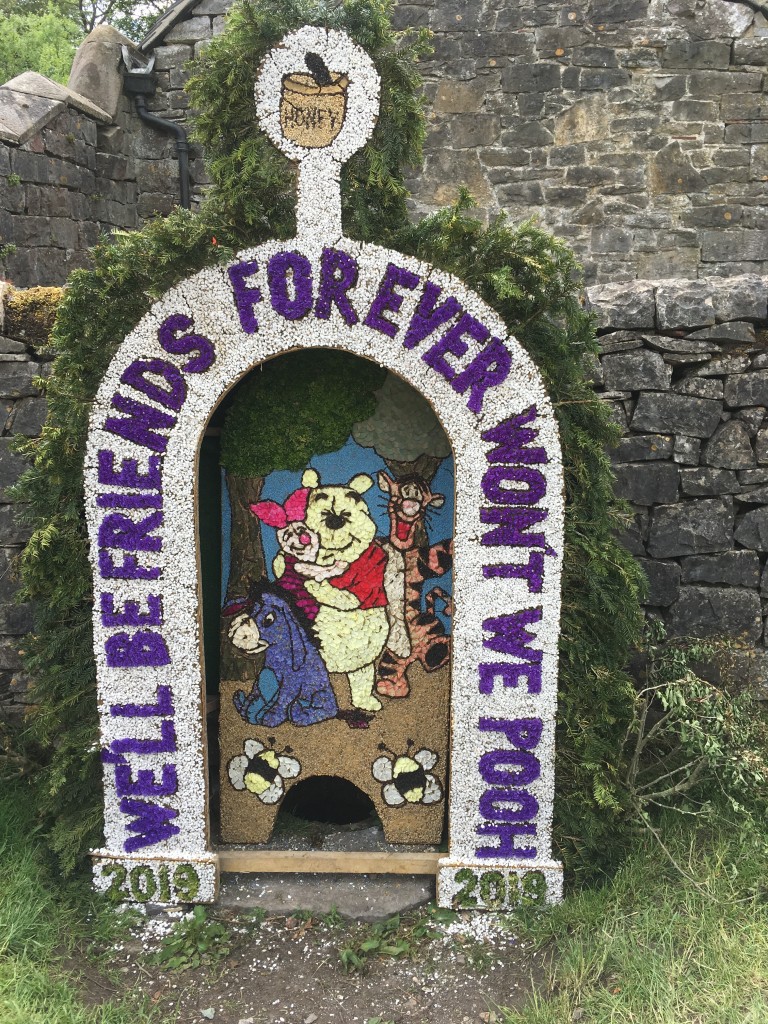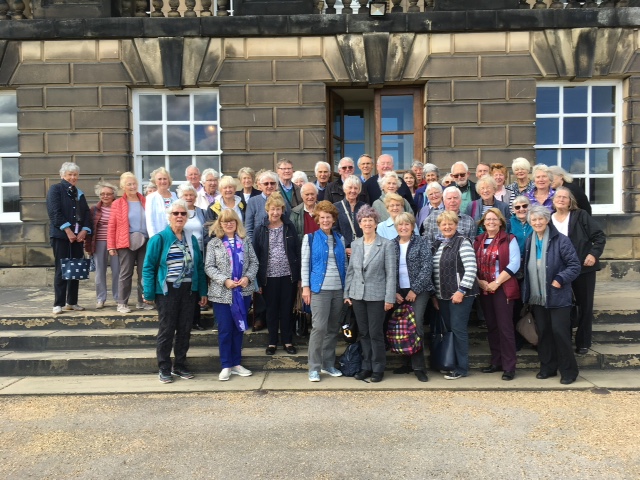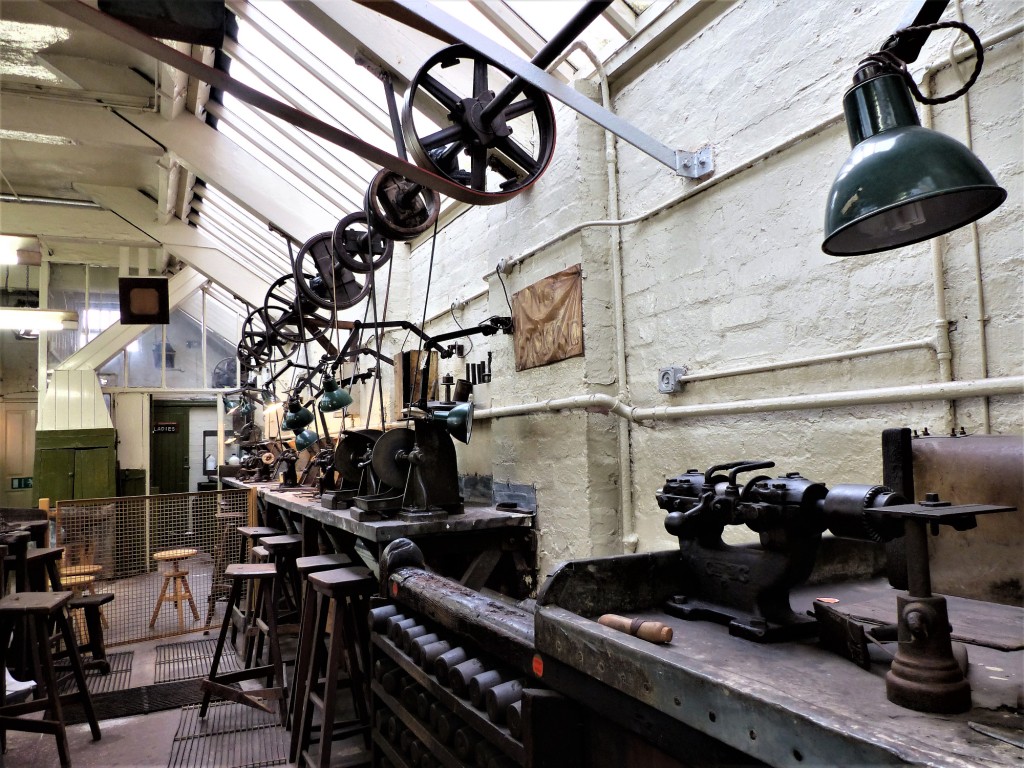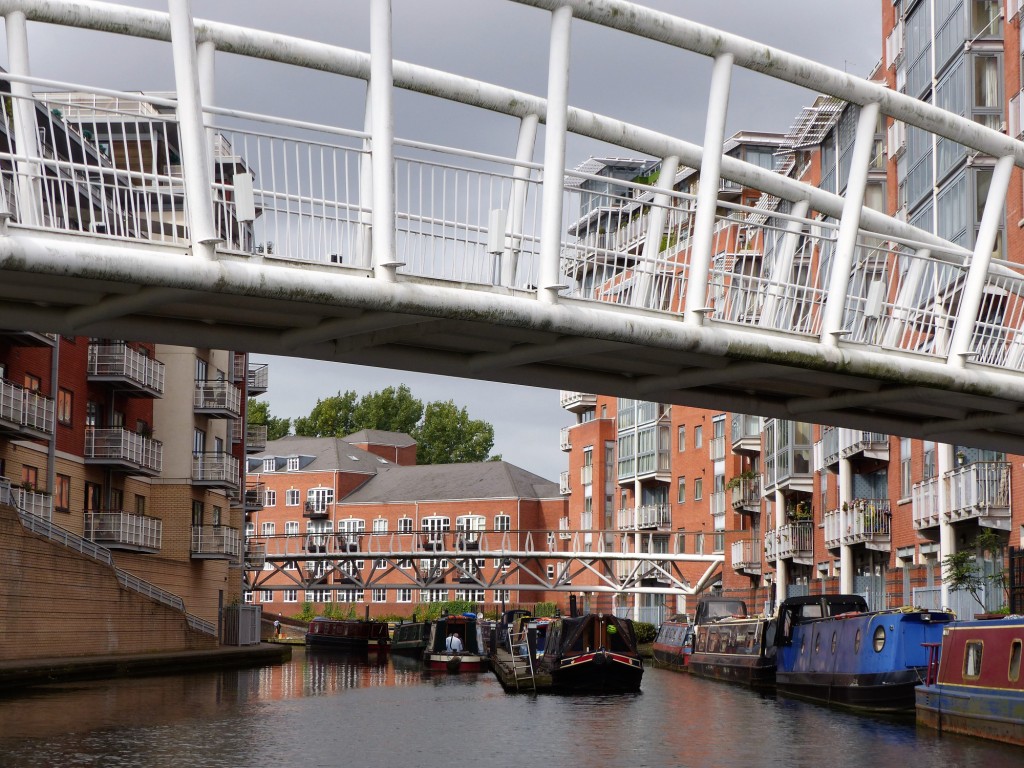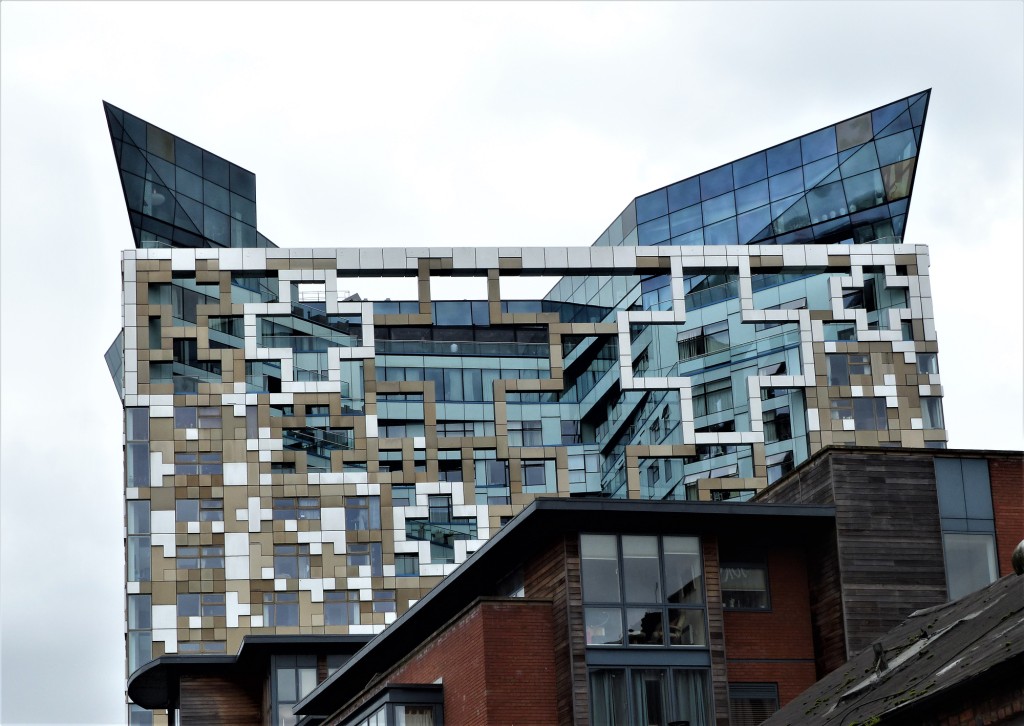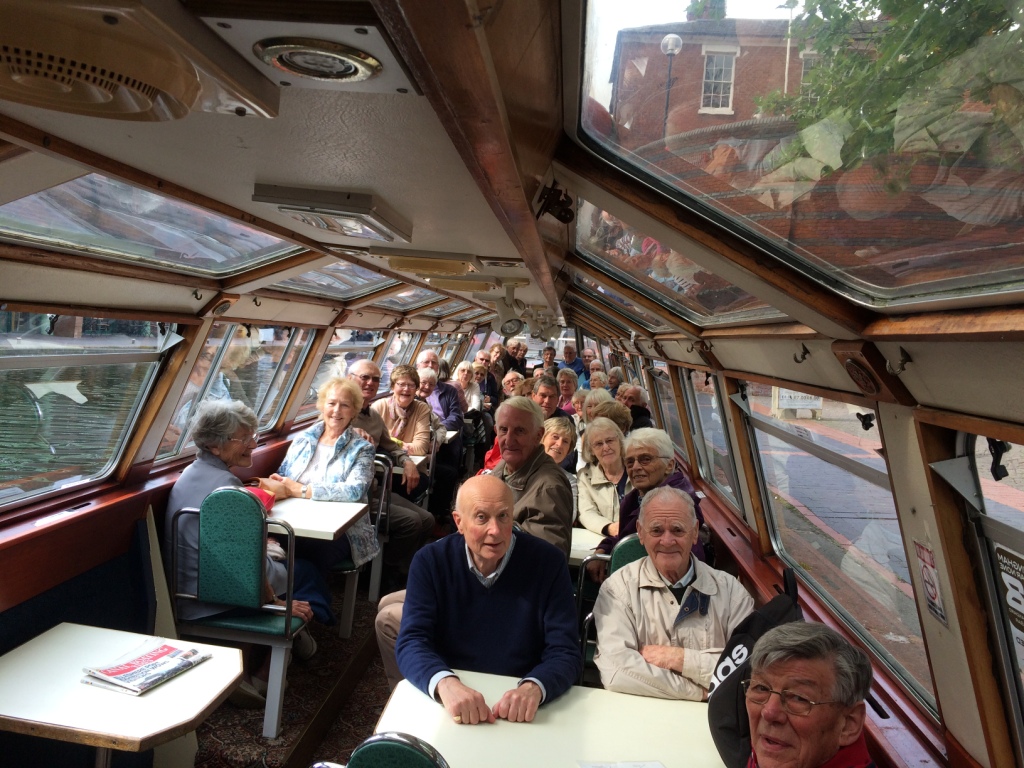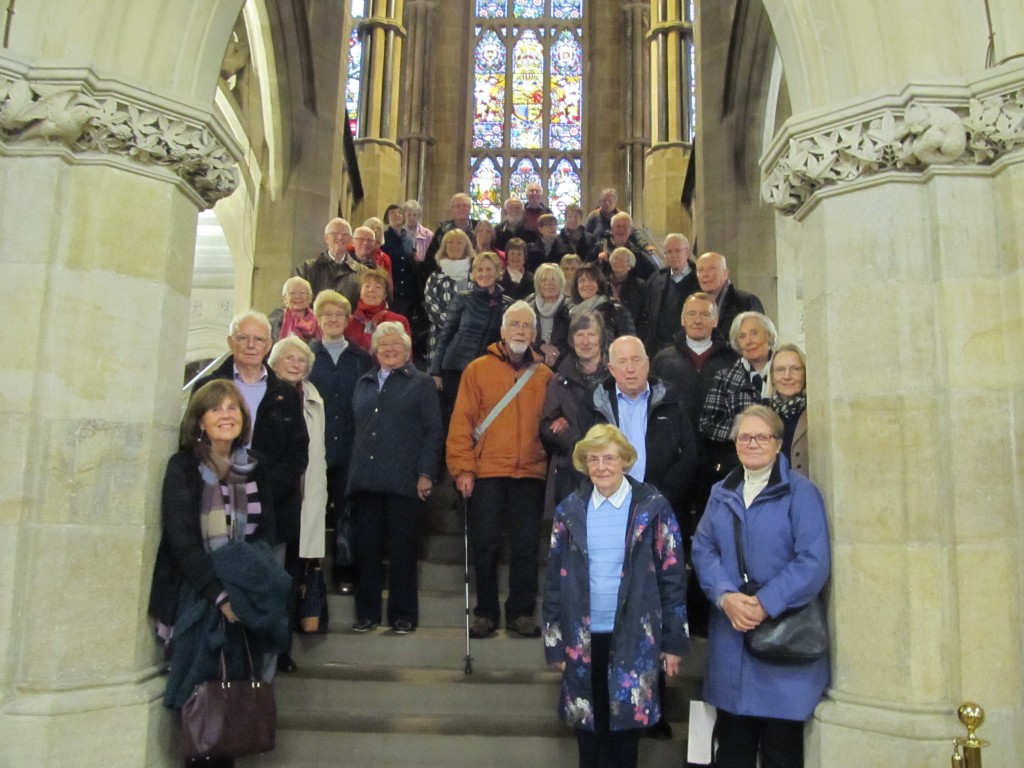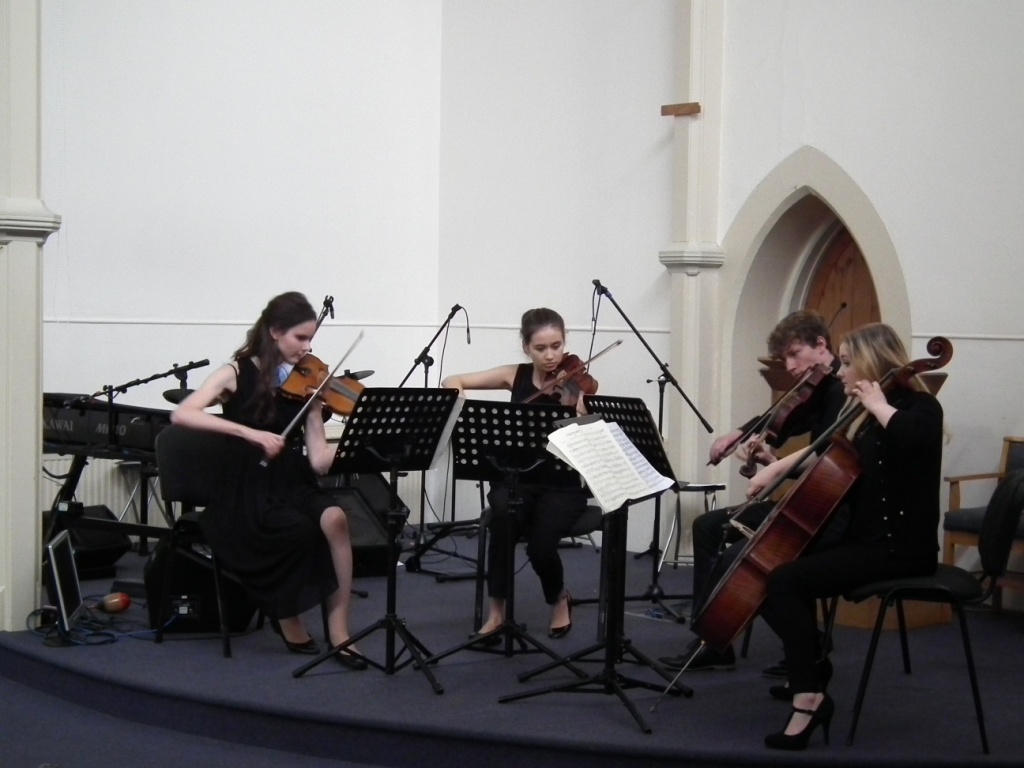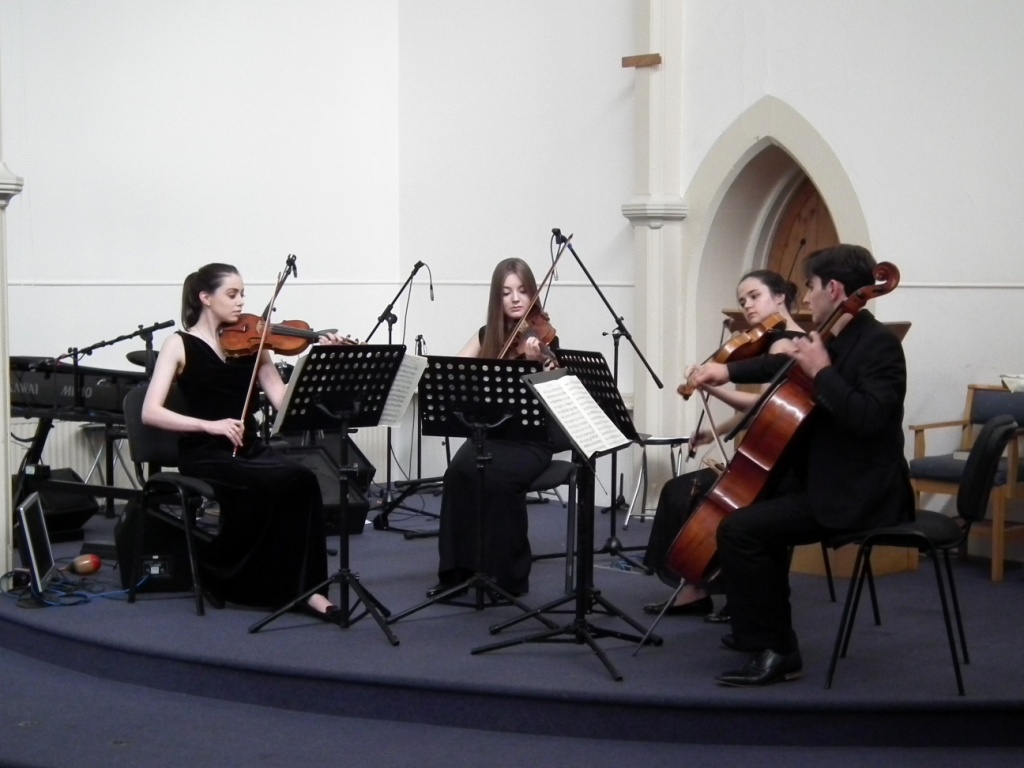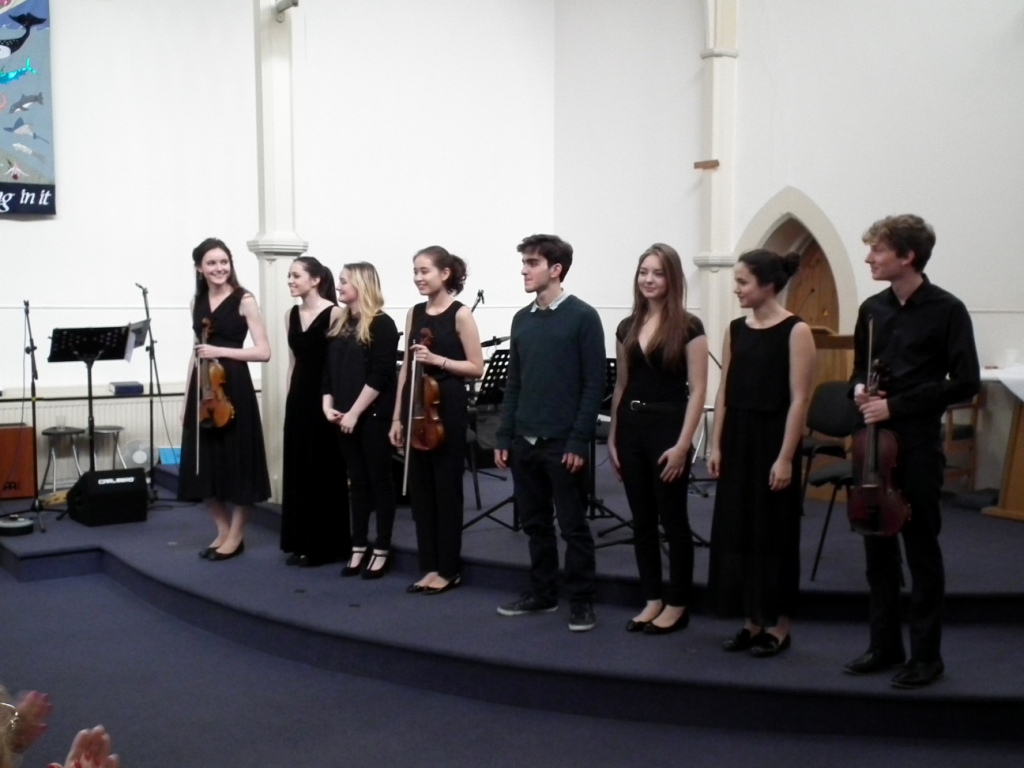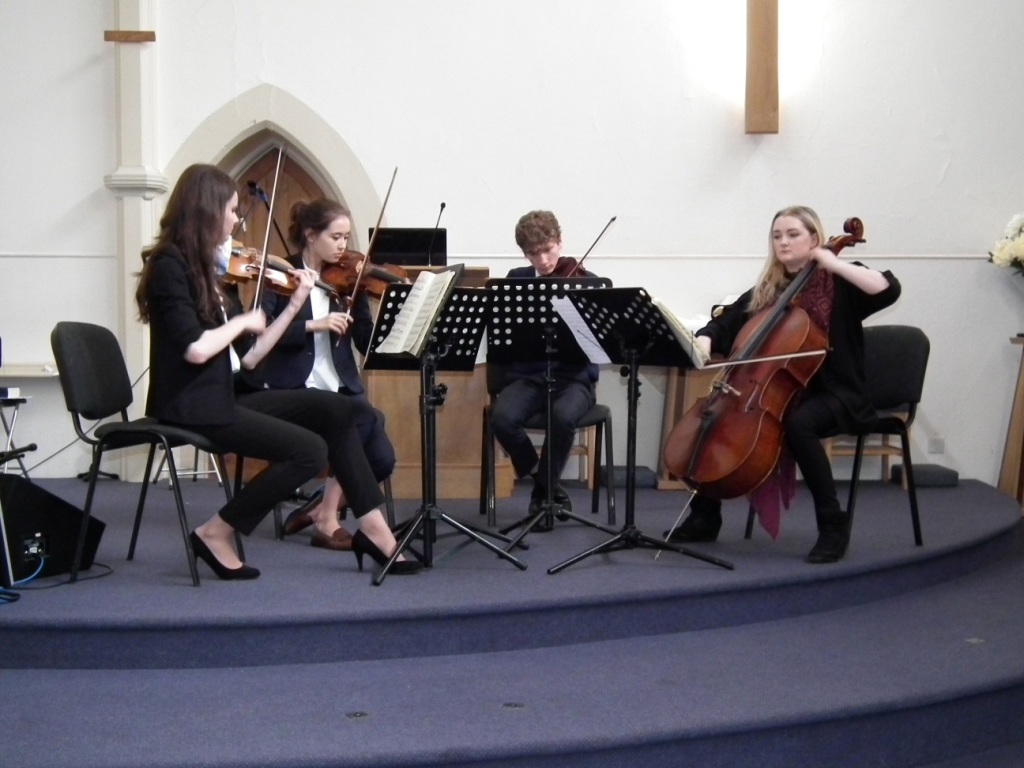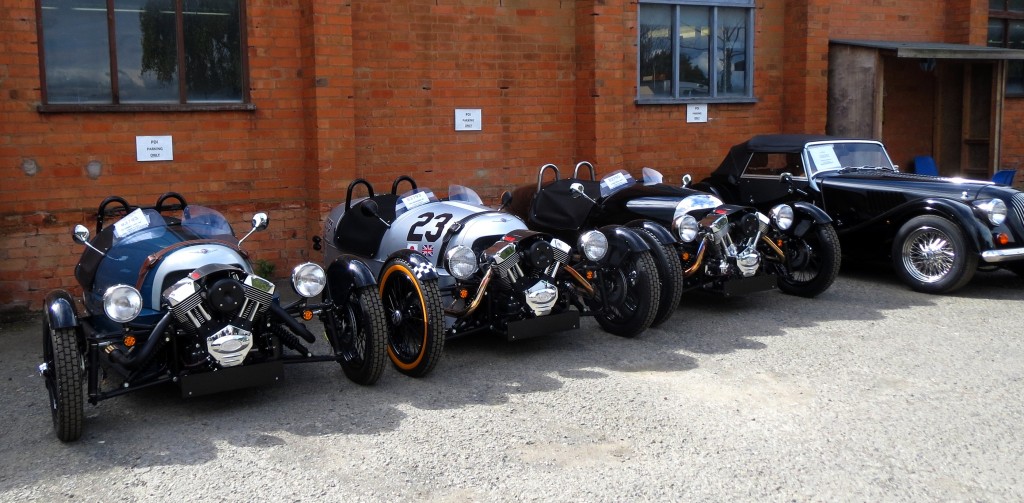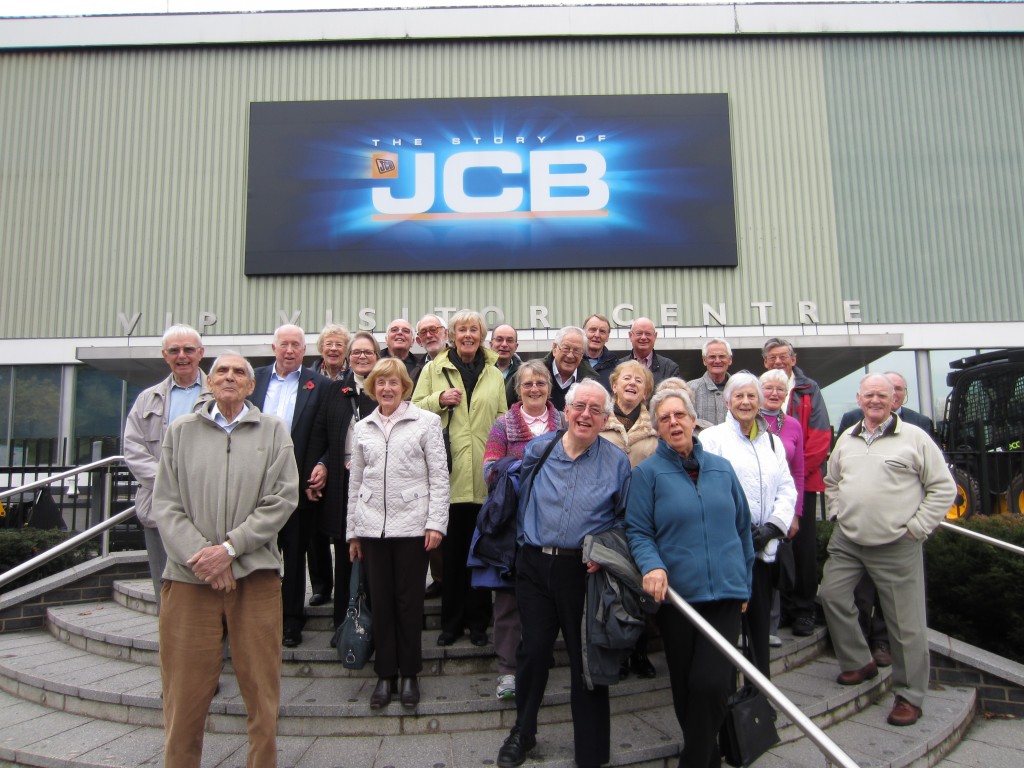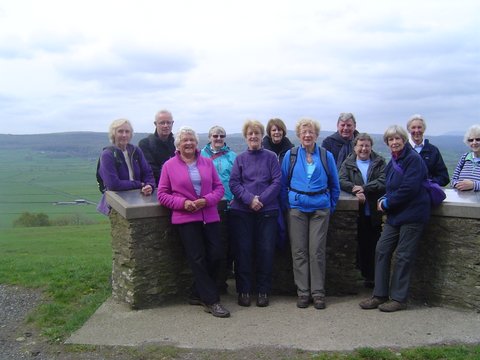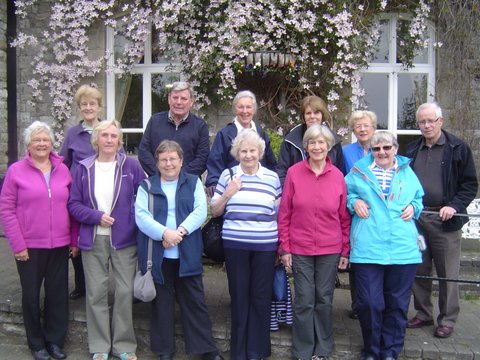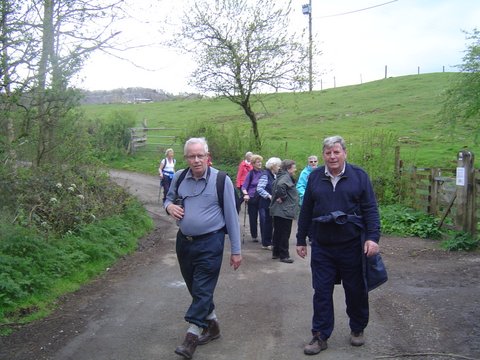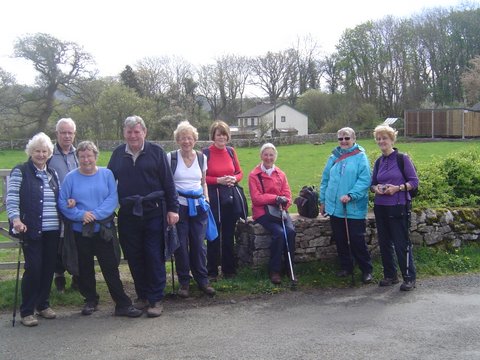Reviews of Group Events, Visits and Outings
This page contains reviews of recent U3A events and visits written by members, which up to April 2014 appeared in our newsletter, Kanuta. The following appear here in chronological order, with the most recent listed first:
- The National Memorial Arboretum, 8th August 2024
- RHS Bridgewater, 5th July 2021
- National u3a Day, 2nd June 2021
- The Midland Hotel, 4th March 2020
- Gorton Monastery, 18th December 2019
- A Day of Merchandise and Molecules: Visits to the Amazon Fulfilment Centre, near Manchester Airport, and to Waters’ Mass Spectrometry near Wilmslow, 16th October 2019
- Lichfield Cathedral and the National Memorial Arboretum, 19th September 2019
- Cruise, the Manchester Ship Canal to Liverpool, 7th July 2019
- Visit to Tissington, 3rd June 2019
- Visit to the Black Country Museum, Dudley, West Midlands, 14th May 2019
- Visit to Chetham’s Library and Manchester Cathedral, 11th March 2019
- Visit to the Whitworth Art Gallery and Portico Library, 22nd November 2018
- Visit to Wentworth Woodhouse, 17th September 2018
- Visit to Birmingham, 6th September 2017
- Music In The Afternoon, 11th November 2016
- Visit to Rochdale, 3rd November 2016
- U3A Summer School 2, Cirencester, 15th-18th August 2016
- Afternoon Concert by Pupils from Chetham’s School of Music, 17th September 2015
- Talk on the Anderton Boat Lift, 10th September 2015
- Visit to the Morgan Motor Company, 2nd September 2015
- Knutsford 10th Anniversary Tea, 14th May 2015
- Talk on Caldwells and their Customers, 8th January 2015
- Visit to JCB, Rocester, 30th October 2014
- Talk on Lewis Carroll and Alice in Wonderland, 11th September 2014
- Traversa – a Solo 3000 Mile Walk across Africa, talk, 12th June 2014
- Ironbridge: Birthplace of the Industrial Revolution, U3A 2-Day Study Break, April 2014
- Amblers group – Walking Holiday to Grange-over-Sands, April 2014
- Celebrity Artist Visits U3A Group, 27 March 2014
The National Memorial Arboretum
Thursday 8 August 2024
Our August coach trip was to the superb National Memorial Arboretum at Alrewas near Lichfield. This was founded in 1994 when Commander David Childs and Group Captain Leanard Cheshire initiated a national fundraising campaign to create a special place where people could remember, among wooded surroundings now containing around 25,000 trees.
The Arboretum was a real treat. The Land Train was an inspired addition to take us through the many areas, with a running commentary as well. What thought has gone into the planning of the site, right down to the minutest detail.
Later on, the inside galleries and the brief snapshot of life through an artistic impression were most interesting, we could probably have filled another hour or so taking it all in. The café supplied us with lunch, as required, and a cuppa in the afternoon. The staff throughout the building were very helpful. It was good to see the group of trainee Gurkhas learning about all the memorials, so smart and keen.
A memorable day, thank you.
Sandra Stonehill
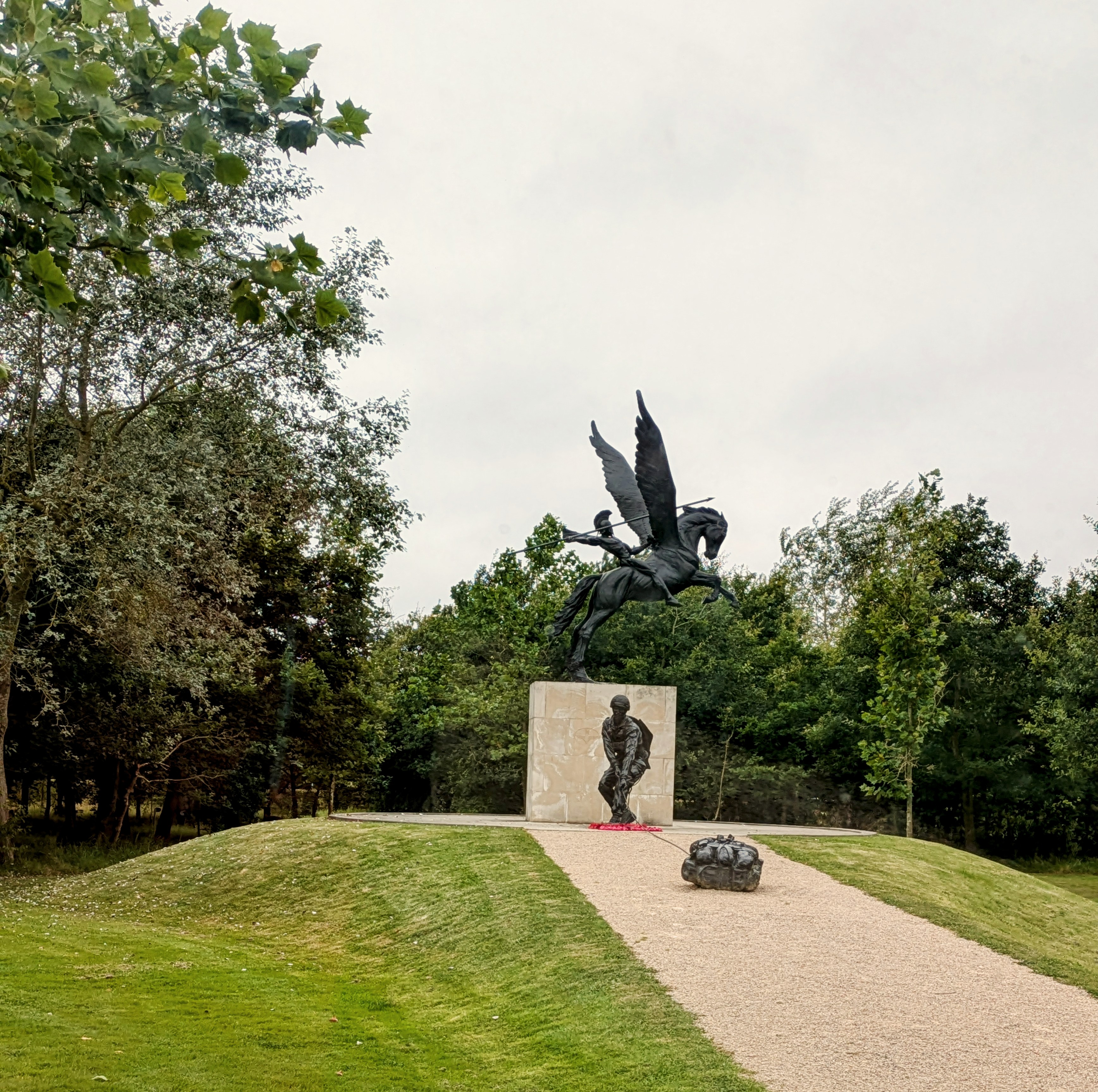

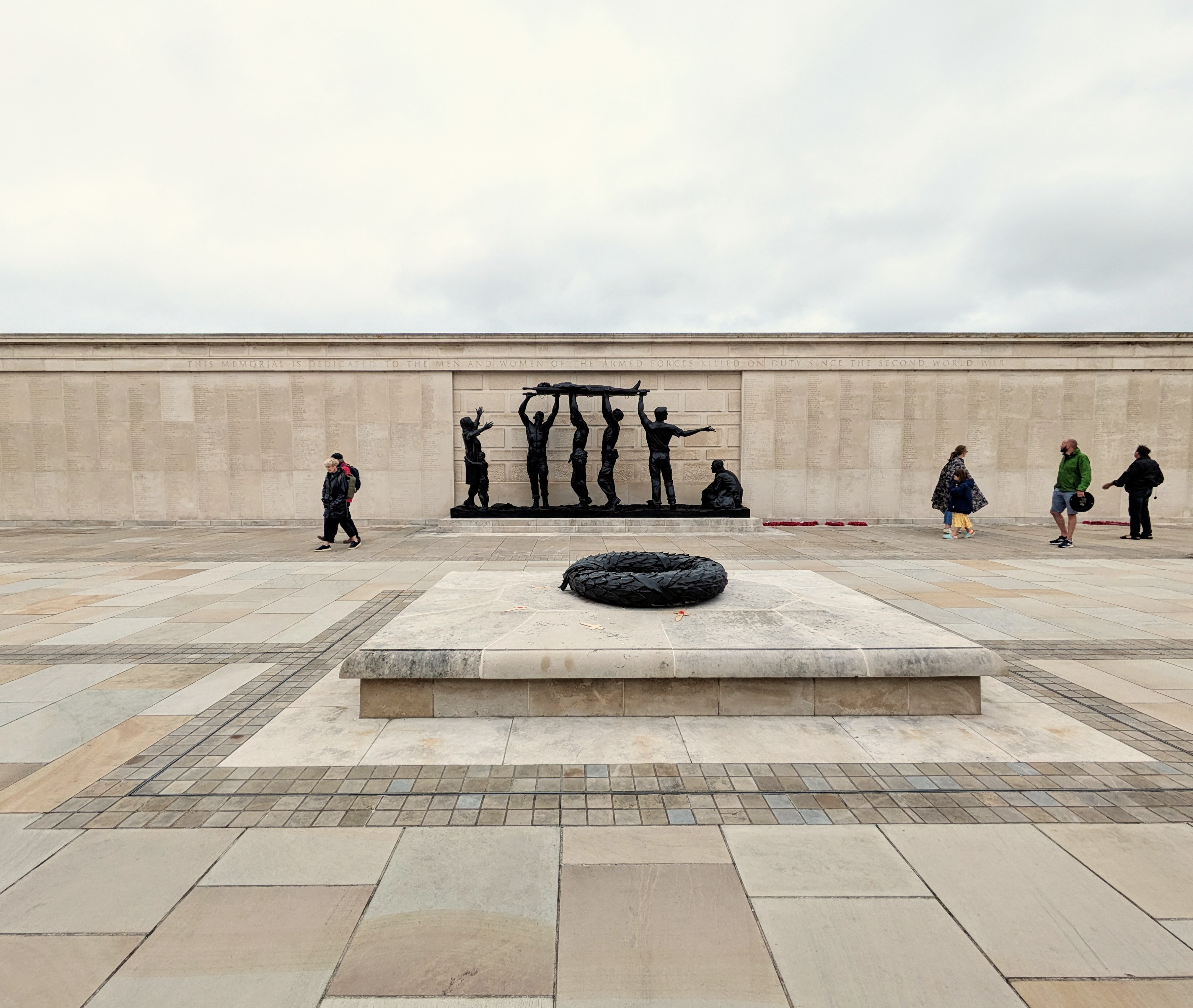
First stop RHS Bridgewater!
Monday 5 July 2021
Think of Salford and we may still think of industry and the bleak paintings of LS Lowry. But, as the city continues to develop its new and vibrant image it now has another splendid addition, thanks to RHS Bridgewater.
The grounds of Worsley New Hall (built in 1840 for Lord Ellesmere but demolished by 1949) have been restored to reflect the land’s grand but working heritage. On Monday 5 July U3A Members enjoyed a full afternoon (without masks!) walking round Tom Stuart-Smith’s masterplan of over 17 identified and varied areas within the impressive Weston Walled Garden. Each ‘room’ – ‘Orchard’, ‘Bee and Butterfly’, ‘Paradise’ was planned by an award-winning designer and provided much to admire with well-placed benches encouraging sitting to enjoy particular favourites. Venture a bit further into the surrounding parkland and there was the Chinese Streamside Garden and Ellesmere Lake.
The Bridgewater Cafe offered a welcome cup of tea and cake before browsing the nearby gifts and homeware and visiting the extremely well stocked Plant Centre.
The Knutsford U3A visits’ programme is always eagerly awaited and well supported; it has been greatly missed over the recent, worrying months. The visit to RHS Bridgewater made a wonderful and uplifting start to celebrate the beginning of a new season. Watch this space – oh, and hands and face of course!
Tracy Cooke
National u3a Day
Wednesday 2nd June 2021
We picked a lovely sunny day on Wednesday 2nd June to celebrate National u3a Day. We pitched our tents (Stuart and Sue Allan’s gazebos actually – thank you Stuart and Sue) in front of the steps of Knutsford Methodist Church. The best spot in town, as it had been for John Wesley, back in 1738.
Your committee members turned up in the spirit of volunteering to man and woman the stand, the following deserve a mention: Irene Hardy, Wendy Brooks, Stuart Allan, Mark Barley, Adrian Long, Sue Allan, Helen Smith and me (Barbara was unwell), with much appreciated time and help from Carol Goodwin, Sandra Stonehill, Liz Griffin and Shirley Digham. Thank you all.
We were delighted to talk to 40-odd people during our six hour stint. No, not forty odd people! So many stories about the way Covid has affected lives, so much anticipation of how things will or may change, such a need to do something approaching normal again. I am so pleased that u3a can offer so much to this great community that we are very fortunate to be part of, and to share.
Roger Brown
‘Tea for Tour’ at The Midland
Wednesday 4 March 2020
‘Under certain circumstances there are few hours in life more agreeable than the hour dedicated to the ceremony known as afternoon tea.’ (Henry James, Portrait of a Lady) – a sentiment echoed by a group from Knutsford U3A as they relaxed in The Tea Room of The Midland Hotel, Manchester after a fascinating tour with our two Blue Badge Guides.
Over delightful sandwiches, scones and cakes there was time to reflect on this iconic hotel. Built by the Midland Railway Company (which ran the nearby Central Station now Manchester Central Convention Complex) it was to be their flagship hotel – so no expense was spared. Now a Grade II listed building ‘The Midland’, as it is known locally, opened in 1903. It took five years to complete at a cost of over £1million pounds and using only the finest materials – terracotta, granite and several types of marble. Its Edwardian, Baroque-style was richly decorated on the outside including four, large, panels of allegorical figures by gifted, local, Knutsford sculptor/modeller Edward Caldwell Spruce. They are all that now remains of the Gentleman’s Concert Hall which had been included in the hotel as the in-house entertainment of its day.
Now surrounded by skyscrapers it is hard to believe that The Midland once had a Roof Garden with views out to the Pennines: tea would be served there to the accompaniment of a small orchestra. Arriving wealthy guests were pampered with a canopied walkway from the station and a range of on-site amenities including a sub-Post Office, travel agent, hairdressers, Turkish Baths, chemist and even a Paris Milliners for the ladies. Each of the 400 bedrooms had its own touch of luxury with an open fire lit daily by maids. No wonder filtered air was provided in the hotel to counter the smoke from nearby trains, the fumes belched out from the mills of ‘Cottonopolis’ not to mention those 400 open fires! (By 1910 the Roof Garden had closed due to the pollution. Just imagine the diners in their finery being coated in soot!) For years, The Midland was the place to be seen by the rich and famous, celebrities and Royalty. It is also the place that Charles Rolls met Henry Royce leading to the formation of Rolls-Royce Limited in 1904. By the 1930s, however, The Midland’s glory days were starting to fade and, although it suffered little damage during the war, the post-war period saw its sad decline coupled with Manchester’s industrial downturn. Linking this past with today – the Midland was build close to where the Peterloo Massacre took place and, close to the Midland is the modern memorial to that event.
This was a great afternoon out and thanks go to Margaret Hinde and Lynda Harris for arranging such a successful visit.
Lynda Harris
Gorton Monastery
Wednesday 18 December 2019
50 members of Knutsford U3A booked for a special Christmas treat at the Gorton Monastery and they were not disappointed.
A smooth journey allowed us time for a coffee before being assembled in the nave for a talk by Elaine Griffiths who, as a Trustee of Monastery along with her husband, was instrumental in getting the restoration underway and seeing it through for the past ten years. She gave us some fascinating information about the history of this Pugin designed building, its demise, its purchase for £1 and its restoration. We heard about the patrons – Terry Waite, Joan Bakewell and Gerald Kaufman and the visits by the Queen and the Prince of Wales. The Trust has a continuing ambition to create something to help rebuild the community by ‘inspiring the future, respecting the past and realising potential’.
The talk was followed by a delightful three course Christmas lunch served by the locally trained banqueting staff in beautifully decorated surroundings. The afternoon was rounded off with Christmas music and communal singing enhanced by an excellent soloist.
Many of us had been to the Monastery before and were amazed to see just how much had been achieved. Even if you had never been before, the before and after photos on display tell that story and it has all been done with constant fund raising and some grants. It really is a magnificent achievement and well worth a visit.
Lynda Harris
Gorton Monastery
A DAY OF MERCHANDISE AND MOLECULES
Visits to the Amazon Fulfilment Centre, near Manchester Airport, and to Waters’ Mass Spectrometry near Wilmslow
Wednesday 16 October 2019
It may take just one click to ‘Buy now’ but a U3A tour of the Amazon Fulfilment Centre showed exactly what it takes to get that purchase to your door!
Years ago a visit to a ‘department store’ (anyone remember Kendal Milne and Affleck & Brown?) could be a family day out. How the landscape of retail has changed! Now we ‘buy before we try’ and there’s little ‘window shopping’ unless it is digital window shopping for the best deal. Consumers move in increasing numbers from in-store retail to the convenience and choice of online shopping; over half the 65s (once described as the ‘tech resistant’ generation) now shop online. Amazon’s automated Fulfilment Centre is geared up to meet this growing demand with its 12 miles of conveyors, towers of shelving plus monitors, ‘totes’, ‘pods’, ‘bins’ and even ‘U-boats’! A workforce of 1200 and army of robots stock, store, pick, pack and deliver thousands of items per day – 580,000 orders per day in December 2018! No wonder town centres and High Streets are under pressure with talk of a ‘retail apocalypse’. It was mesmerising to look beyond the steel screens as dozens of carts moved silently around delivering wares to waiting operatives, each drive choreographed by the matrix of 55,000 fiducials (2-dimensional bar codes) on the floor. Whizzing down conveyors, parcels had address labels fired on to them before heading off to worldwide destinations. E-commerce and the technology behind it continue to advance relentlessly – from the comfort of our armchair we can even make a purchase using just voice control and Amazon’s virtual assistant, Alexa. The developments in e-commerce look unstoppable; shopping as many of us knew it can surely never be the same?
Refreshed by a lunch and lively conversation at The Plough and Flail the group moved on to Waters’ Mass Spectrometry in Wilmslow. This impressive building (opened in 2014) is based on the shape of a mass spectrometer. On either side of a central atrium (the ‘Ion Path’) are glass panels behind which are large laboratories each with the clinical sharpness of operating theatres. Despite its hi-tech label, mass spectrometry dates back to the 19th century and the work of John Dalton and others. It has taken decades for the principle that atoms of different elements vary in size and mass to form into a coherent, specialist field of science. Mass spectronomy needs a complex set of analytical techniques and machines to measure how ionised atoms in a substance react to electronic or magnetic fields; the computerised results identify its components (or contaminants) present in microscopic quantities. In Wilmslow, Waters’ manufactures these precision instruments and their software, carries out research and development and offers outreach and training for its equipment sold worldwide. Mass spectronomy has a vital role in pharmaceuticals, medicine, food standards, space and is the technique used in testing for drugs in sport.
This was a great day to see cutting edge technology in action and a time to think about its impact on future jobs, training and the workplace. With such a profound shift in skills the question is – will robots replace people or will people become more like robots? Perhaps we should just ask Alexa?!
A big thank you to Margaret Hinde for such a first class and informative day.
Knutsford 3A at the Amazon Fulfilment Centre
LICHFIELD CATHEDRAL AND NATIONAL MEMORIAL ARBORETUM
19 September 2019
Thirty three members of the U3A joined the coach to travel to Lichfield Cathedral where we were greeted with coffee and biscuits prior to joining guides who took us on a tour of the Cathedral.
There has been a place of worship on the site of the present Cathedral for over 1300 years and the guides explained the rich history of the only medieval three-spired cathedral in the UK. We had the opportunity to see along the walls carvings of the faces representing worshippers from the medieval period and one of only three wall painting left after the Reformation and Civil War.
Prior to leaving the Cathedral, in St Michael’s Chapel, we viewed a number of military memorials including Books of Remembrance for both World Wars.
We then travelled on to The National Memorial Arboretum which is contained within a 150 acre site and is home to a variety of flora and fauna and is a haven for nature lovers. It is also home to over 350 thought provoking memorials covering both military and civilian associations, along with tributes for individuals.
We assembled in the Chapel for a short introduction to the Arboretum prior to joining the Land Train where we enjoyed the running commentary as we explored the grounds of the Arboretum and saw the memorials which were rich in design and symbolism and sympathetic to the lush gardens they inhabit.
Following the Land Train and prior to joining the coach for the return journey to Knutsford, we had time to explore other areas of the Arboretum.
CRUISE, THE MANCHESTER SHIP CANAL TO LIVERPOOL
Sunday 7th July 2019
‘No Fly Cruise; door to door transfer; departure from Knutsford’
Too good to be true? – Not if you were one of the 100, Knutsford U3A members to sail down Manchester Ship Canal on Sunday 7 July. Well, it may not be The Caribbean but if this fascinating feat of engineering were abroad then you can bet it would be one of those ‘must do’ excursions.
Around 350 passengers from all over the area were on board as the Mersey Ferries boat ‘Royal Iris’ slipped her moorings at Salford Quays and turned in the dock basin towards Liverpool. Throughout the 36-mile, 6-hour journey a Blue Badge Guide gave a running commentary on its history and the seven swing road bridges, five high level railway viaducts, four high-level road bridges and five locks we would pass. These five, huge locks manage the 60ft difference in water levels between Salford and Liverpool. The time flew by as there was always something to s passing through locks and under bridges, mostly unchanged since they were built over 100 years ago. View the succession of swing bridges, a graceful sight as they turn through 90 degrees to allow ships to pass.
Marvel at the historic buildings, industry, fields, houses and the wide open space of the Mersey estuary as you cruise along, all surrounded by nature’s beauty and tranquillity.ee. Between locks and bridges passengers were kept busy spotting historic buildings, landmarks and wildlife – with many photo opportunities for bird watchers. Panoramas ranged from heavy industry to the flatlands of agricultural Cheshire.
Sitting back enjoying the pleasure cruise it was sobering to be reminded of the conditions of the canal’s nineteenth century construction. At its peak up to 16,000 men and boys were said to be working on the project housed in small villages along the canal. Work was hard, in all weathers and dangerous. In a time well before Health and Safety, most of the digging would be by hand. It would take place close to the 200 steam trains hauling 6,000 wagons of debris along open tracks. By 1892 over one thousand men had been injured (one hundred and sixty-five of them left permanently disabled) and one hundred and thirty men had died. Having taken seven years to build at a cost of £15 million it was finally opened by Queen Victoria in 1874. Traffic taking cotton to the prosperous mills of Lancashire peaked in 1958. Thereafter a decline in the cotton trade, containerisation and ever larger cargo boats resulted in the closure of Salford Docks in 1982 – although the canal remains a working waterway.
The journey came to an end all too soon. At about 4.30pm we entered the wide Mersey estuary to see Liverpool waterfront, a UNESCO World Heritage Site, bathed in sunshine and looking at its very best. Our coach was waiting on the quayside after a fascinating cruise. It was a great reminder of the canal’s history and its key role in the life of the industrial heartland here in the North West.
Manchester Ship Canal Cruise
VISIT TO TISSINGTON
Monday June 3rd 2019
Well, well, well…..!! On Monday 3 June a group from Knutsford U3A had a great day in the Derbyshire village of Tissington.. This unspoilt, estate village is made up of a few cottages around Tissington Hall (built in 1609 for the FitzHerbert family), a fine church, duck pond and a group of small enterprises. It is, however, best known for its Well Dressing, a thanksgiving custom celebrating the gift of water to the village. Some say it started after the village escaped The Plague in 1348-9, which swept through nearby Eyam. Others link it with the severe drought of 1615 when crops and animals perished but the wells of Tissington continued to flow. Maybe of pagan origin it is now a Christian celebration – the decorations erected on the eve of Ascension Day, and blessed on the Thursday by a procession of clergy progressing around the village visiting each of the six wells in turn. Well Dressing is much more than just a floral decoration! It involves the community in ‘hands on’ construction for several days with a host of jobs delegated to willing helpers. Six, large display boards have to be soaked, clay collected, plastered in place and shaped. It is then decorated with natural materials (leaves, flowers, cones etc) to form a collage before being erected at each well. They remain in place for a week and need daily maintenance to keep the materials fresh. A tour of Tissington Hall followed with our guide, Polly, providing a fascinating insight into this lovely Jacobean mansion and FitzHerbert family.
Tracy Cooke
Well Dressings in Tissington
VISIT BY TO THE BLACK COUNTRY MUSEUM, DUDLEY, WEST MIDLANDS
Tuesday 14th May, 2019
An interesting outing was organised by Knutsford U3A to the Black Country Living Museum – a 26 acre open air museum with something for everyone, including fans of the TV series “Peaky Blinders” as it was where scenes were filmed. It is a large site, but a tram or trolley bus service runs across the site every 15 minutes. We experienced the sights, sounds, smells and tastes of 300 years of the Black Country’s industrial past.
Costumed characters explained what it was like to live and work in one of the world’s most heavily industrialised landscapes, and live demonstrations took place. Original period shops and houses were explored. We could descend on foot into the underground drift mine and face the harsh reality of a coal miner’s life in the 1850s. In the school room a Victorian school lesson could be experienced. We could quench our thirst in the Bottle and Glass Inn, where a warm welcome awaited in this traditional spit and sawdust pub. Lastly, but by no means least, we could take a most memorable canal trip (operated by Dudley Canal Trust) into the spectacular limestone caverns where, amongst much other information learned, a most poignant and sad fact was just how cheaply the lives of young children were regarded during those times.
The Museum was extremely absorbing, the scenery spectacular and luckily the weather amazing!
All in all, a day out enjoyed by everyone.
Penny Braham
VISIT TO CHETHAM’S LIBRARY AND MANCHESTER CATHEDRAL
Monday 11th March 2019
On 11 March a group from Knutsford U3A felt more like time-travellers moving from the modern skyscrapers of the city to step into Medieval Manchester. First stop was Chethams Library for a guided tour with Jonathan Schofield; the original building of 1421 accommodated priests from the nearby collegiate church – later to become the cathedral. A bequest by Humphrey Chetham (a successful Manchester textile merchant) enabled the building to be purchased in 1653 to create a school and Library – now the oldest free public lending library in the UK. Its 100,000 volumes (over half of which were published before 1851) were not even catalogued until 1791 and then only in Latin! It has now been acknowledged by The Arts Council to be a collection of great, national importance. The building is a treasure trove of stone passages, oak staircases and richly panelled rooms containing manuscripts, books and paintings. It’s hard to think that Karl Marx and Friedrich Engels met there – perhaps even to research ideas for their Communist Manifesto?
Then it was on to a tour with three guides of Manchester Cathedral. Formerly the Collegiate Church of St Mary, St Denys and St George this historic, parish church became a cathedral when a new Manchester diocese was created in 1847; it was substantially renovated in 1887 with most of the stonework being Victorian. Lovingly restored after damage in the Blitz of 1940 and IRA bombing in 1996, the cathedral now has one of the finest collections of new stained glass in the country with the Alan Davis’s 2016 ‘Hope’ window and artist Anthony Hollaway’s ‘Wall of Light’, a stunning installation created by the five windows along the west wall. The interior woodwork is original 15th and 16th century; high up in the nave are angels carrying replica mediaeval instruments highlighted in gold. The medieval misericords in the Quire are said to be some of the finest in Europe dating from 1495-1506.
Our thanks to Margaret Hinde for organizing such an interesting and enjoyable day.
Tracy Cooke
Group Photo outside Chethams Library
VISIT TO THE WHITWORTH ART GALLERY AND PORTICO LIBRARY
Thursday 22 November 2018
We have visited countless museums abroad but not The Whitworth just 16 miles away; an excellent visit organised by Penny Braham would put this right! In recent years art museums have really had to widen their appeal and move on from their world of connoisseurs, wealth and privilege. Museums are facing tough competition as art is accessed far beyond their walls via social media, photo-sharing and virtual tours; most now allow photographs and some even have ‘Museum Selfie Days’!
The Whitworth was founded in 1889 by philanthropists Robert Derbyshire (a lawyer) and Joseph Whitworth (an engineer). The first building and park opened in 1908 with the traditional role of collecting, preserving and sharing rich collections to provide the growing industrial community with culture. It became part of The University in 1958 and in 2015 following a £15 million refurbishment the winner of the Art’s Fund ‘Museum of the Year’. It gets a four star rating on Tripadvisor and is one of the most popular tourist attractions in the city.
After a lively introduction by our guide, Amy, we had plenty of time to admire the building and view the themed collections of prints, fabrics and wallpapers. In spacious galleries were well labelled exhibits and thought- provoking subjects: everything from ‘Prints of Darkness’ – Goya and Hogarth’s astute observations on moral and social issues of the day to the extraordinary multimedia installation ‘Thick Time’ of William Kentdridge. Children from local schools were absorbed working on ideas from Alice Kettle’s ‘Thread Bearing Witness’ (highlighting to plight of displaced people) while ‘We are 11’ was a specific collection curated by eleven, 11-year old local pupils and illustrating issues important to them – family, friends, worries and hopes for the future. Outside in the ‘Gallery in the Park’ are sculptures including Anya Gallaccio’s work of a recreation in steel of a London Plane tree which had died and had to be removed during the 2015 renovation.
October 2017 saw Manchester designated a UNESCO City of Literature so it was apt move on in the afternoon to visit The Portico Library. This fine Greek Revival style building (Grade II listed) opened in 1806 as a subscription Library and Newsroom – Elizabeth Gaskell was a member. It is boxed in by skyscraper office blocks and the ground floor now occupied by a pub called ‘The Bank’ (The Bank of Athens leased it in the 1920s). The library houses a 19th century collection of approx 25,000 books and it also acts as a general cultural centre – its current exhibition entitled ‘Spirited’ is based on womens’ efforts to gain the vote. The librarian had selected several rare volumes to discuss including a first edition (1853) of ‘Cranford’ donated by her husband the Rev William Gaskell (a prominent member of the library) and ‘The Great Balzoni’s’ folio ‘Egypt and Nubia’ (1822) with its delicate, hand-coloured lithographs of ancient antiquities and Egyptian artwork.
The visits nicely complemented each other in thinking about the age-old question ‘What is art?’ Here in one day we were reminded how artists and authors communicate with their audiences on important subjects in different, yet equally powerful, ways. The full day passed quickly: door-to-door transport (no parking worries!) a light lunch and two interesting visits. A big ‘Thank you’ to Penny Braham and the committee for a first-class, U3A visit.
Tracy Cooke
VISIT TO WENTWORTH WOODHOUSE
Monday 17th September 2018
Thanks to a well organised visit by Knutsford U3A (especially to Margaret Hinde) we were spared the individual stress of driving the 56 mile journey (M56, M62, M67 and Woodhead Pass!) to Wentworth Woodhouse.
The house described by Dan Cruickshank as ‘arguably the largest, most splendid and artistically breathtaking ever built in Britain’ was bought by a Trust in 2017 and recently partnered by the National Trust to offer two tours.
Had its history been kinder this northern gem would surely have equalled (even surpassed) many of the nation’s finest, stately houses? But, over the decades, family feuds, financial decline, crippling death duties and scandal took their toll with the final downturn coming in the 1940s when the coal industry was nationalised and Manny Shinwell (Minister for Fuel and Power) authorised open-cast mining in the grounds. Surrounding land was torn up, Repton’s formal gardens destroyed and slag heaps built up adjacent to the house. Much of the income to run the house came from coal (the house sat on the rich Barnsley seam) but with nationalisation this promptly dried up. Raising funds thereafter included a six-day sale in 1948 when its contents of fine furniture, paintings etc. were sold off and leasing the building as a teacher training college. By 1986 Wentworth Woodhouse was largely abandoned. In 1989 the decaying building was bought by a businessman but following financial difficulties it was repossessed by the bank in 1998. A year later it was purchased by a retired architect (Clifford Newbold) and family with the intention of restoring and developing the site. Following his death it was sold to the Wentworth Woodhouse Preservation Trust in 2017.
The two tours (The Wentworth Tour and The Clifford Tour) can only sample some of the 300+ rooms in the house – actually made up of three houses on the site. Despite being largely empty the splendid proportions, exquisite plasterwork (based on designs of Inigo Jones) and marble fireplaces are still hugely impressive. An imperial staircase leads to the pièce de résistance of The Marble Hall – said to have taken up to a hundred years to fully complete. The volunteer guide (Jo) had been a student there in the ’70s and she provided a lively and informative commentary on the history of the house (originally dating from the 17th century) and its many owners.
“There is a sublime yet tragic atmosphere about it” concluded Dan Cruickshank in his book ‘The Country House Revealed’. Seeing the house now it is hard to believe that it was once such an influential, political and social powerhouse. But, it is good to know this grand yet sad place is to undergo a scheme of restoration and development and so do justice to its fascinating history.
With so much culture to absorb it was delightful to relax with a cup of tea at the end the day in the nearby 16 acre Wentworth Garden Centre and its Walled Garden Restaurant – interestingly created on what had been the former Kitchen, Italian and Japanese gardens of Wentworth Woodhouse.
Tracy Cooke
Group Photo Wentworth Woodhouse Visit
VISIT TO BIRMINGHAM
Wednesday, 6th September 2017
The early morning start was well worth the effort for our coach trip to Birmingham on Wednesday 6th September. With an unusual, but very welcome, smooth journey down the M6 we arrived at the Jewellery Quarter Museum 45 minutes early but managed to find two local cafes to provide refreshments for our group of 40.
The Museum is built around an old family-run jewellery company which was abandoned in the early 1980s leaving a large quantity of documentation stretching back almost a century and various paraphernalia of the workforce – but no gold. After repairs to the building and the cataloguing of the contents this ‘time warp’ was opened in 1992. Our hour long guided tour took us through the manufacturing process and stories of those involved. It was fascinating.
After a leisurely lunch around the Canal Basin we had another guided tour – this time on a narrow boat along the canals of central Birmingham. This gave us views of some of the City’s industrial heritage and new developments, many of which made good use of the old buildings. Birmingham boasts of having more canals than Venice. It might only be 9 more miles but enough for an accurate boast.
Lynda Harris
MUSIC IN THE AFTERNOON
Friday, 11th November 2016
The Music Appreciation Group held a “Music in the Afternoon” concert on Friday 11th November which featured pupils from Chetham’s School of Music.
U3A members filled the Methodist Church and were treated to a delightful musical afternoon by the young musicians led by Martyn Parks.
We were entertained by five soloists on violin, cello, trombone, oboe and flute with piano accompaniment by Martyn. The ages ranged from 13 -18 and all introduced their pieces and were very accomplished.
A wide programme of music including Mozart Concerto No.2 in D Major KV211, Bach Suite No.3 for solo cello in C major & Poulenc Sonata for Oboe and Piano but also lesser known works by such as Nigel Hess Theme from ‘Ladies in Lavender’ and Casterede Sonatine for Trombone and piano.
We wish them all the success for the future which, on the strength of this programme, they all truly deserve.
Many thanks to all involved in the afternoon.
Susan Hopkin
VISIT TO ROCHDALE
3rd November 2017
Early in November 40 U3A members visited Rochdale to see the Rochdale Pioneers Museum and Rochdale Town Hall, venues that showed two very different sides of this old mill town.
We started at 31 Toad Lane, the original building where, in 1844, 28 working men, the Rochdale Pioneers, started the first successful co-operative. In this original shop our excellent guide told the story of the Pioneers and the development of co-operation into the world wide movement that we have today – all based on the principles laid down in the mid 1800s. We had time to see all the informative visual displays as well as the small conservation area outside.
In total contrast, the Town Hall is an imposing, Grade I listed building “widely recognised as being one of the finest municipal buildings in the country”. It was designed and proudly decorated with painting, symbols and beautiful stained glass to celebrate the industry and trade which gave the town its Victorian prosperity. Another excellent, informative guide led our tour of the old Council Chambers, the old Courtroom (now the Council Chamber), the Mayor’s Parlour and the very impressive Grand Hall with its balcony overlooking the town and the new statue of Gracie Fields.
Lynda Harris
Group members in Rochdale Town Hall
u3a SUMMER SCHOOL, CIRENCESTER
15th-18th August 2016
I arrived at the impressive buildings and grounds of the Royal Agricultural University in the middle of a glorious summer afternoon to register and collect the keys to my accommodation for the next three days. Registration was well organised with porters and guides available to help with luggage and show us to our rooms, which were dispersed among several housing blocks on the campus. We had time to freshen up and familiarise ourselves with the campus before attending the first seminar for one hour at 5pm, followed by welcome drinks at 6.45pm and dinner at 7.30pm.
I was the only representative from Knutsford U3A among about 300 delegates, but soon got to meet others from all over the country and on varying courses. My first impression, which was borne out for the rest of the week, was one of warm and welcoming friendliness from staff and participants alike. I was attending the “Singing for Pleasure” class, which was one of nine classes on offer ranging from “Solving Cryptic Crosswords” through “The History of Ideas” to “Garden Design”.
Although some of the subjects on offer did not interest me, I got the impression that those attending them found them all to be stimulating and an enjoyable experience. My singing group was great fun, challenging at times, but in a very supportive environment. We put on a short concert after the gala dinner on the Wednesday evening, which was housed in the beautiful chapel on the campus. Audience participation was mandatory for some of the more light-hearted and familiar songs and everyone had a great evening.
We had been entertained the previous evening by a jazz/folk trio of highly talented professional musicians who provided a varied programme from simple traditional folk songs to complex jazz versions of more modern tunes. I am not a fan of jazz but found their renditions to be easy on the ear and so impressive to watch, making the evening a delight.
My overall impression of the Summer School was “fantastic”. Set in a fabulous location with good and plentiful food, adequate and comfortable facilities with free gym and free Wi-Fi if you are desperate to keep in touch with the outside world! It hit all the U3A strapline buttons: I had Learnt a lot; I had Laughed even more; and came away having made so many new friends and a feeling of Living life to the full! I shall certainly be going again! For anyone else interested, the programme for next year will be published in December in Third Age Matters and on the National U3A website. It is advisable to book early as many of the courses are very popular and numbers are limited…perhaps I will see you there!
David Lee
AFTERNOON CONCERT BY PUPILS FROM CHETHAM’S SCHOOL OF MUSIC
17th September 2015
This was a programme of string music largely comprised of string quarters by Haydn (No.6) and Beethoven (No.7) played by two different ensembles.
As appetizers we were presented with virtuoso violin solos composed by J.S. Bach and Paganini. The soloists were Coco Inman and Elizaveta Saul who played with total assurance and panache, making light of the technical challenges.
The chosen quartets were a wonderful representation of the great composers and their differing styles. The demands of performing as small ensembles are considerable. This is especially the case for young players all of whom were 16 or 17 years of age but both ensembles produced a lovely quality of tone and an acute sense of balance and style. The gradation of dynamics was extensive and never seemed to be over emphasised, a sure sign of maturity.
For the Beethoven, the above named soloists were joined by Nils Jones and Francesca Cull. The players for the Haydn were Iona McDonald, Monika Kudlinska, Miranda Bailey-Sharam and Hugo Eedle.
In summary, we were royally and very professionally entertained. Well organised by Sue Hopkin & her willing helpers.
Gordon Roberts.
Photographs from Chetham’s Concert, 17th September 2015
THE ANDERTON BOAT LIFT
Talk at the General Meeting, 10th September 2015
Dave Thomas of the Canal and River Trust spoke with authority and enthusiasm about The Anderton Boat lift when he addressed an audience of 160 U3A members at the General Meeting on Thursday 10th September. He kept his large audience engaged and entertained with a selection of photos and lively speech telling the history of this unusual and truly impressive industrial structure.
We were shown pictures of the lift in its various incarnations – hydraulic, electric, modern hydraulic – and photos from the earliest days of traffic at the Anderton Basin pre-lift, when labour intensive chutes and steep planes were the only means of trans-shipping the goods between the 2 navigable waterways – Trent and Mersey Canal and River Weaver. For the workers this was heavy, physical employment but for the employers slow and expensive.
With so many boats from the Salt Industry, and the coal-mining and industry of the Potteries reaching the River Mersey, the interchange needed improvement. In 1870 locks as a solution was rejected; too much water would have been lost and running costs would therefore have been too high. So the idea for a lift was born.
Dave gave us a good indication of the complexity of the engineering problems and the ingenuity displayed in addressing them, however he also revealed the huge oversight of using a hydraulic system when the local water was so contaminated. Within only 5 years Corrosion became a problem and the solution to that huge problem was another fascinating aspect of the story.
In its heyday up to 68 boats went through each day.
It lay derelict for many years and was under threat of demolition however thanks to the enthusiasm and enterprise of local people this wonderful structure is now preserved for future generations. The Anderton Boat Lift or The Cathedral of the Canals is one of the UK’s most prestigious industrial heritage sites – now on the National Heritage List for England.
Pauline Hales
VISIT TO THE MORGAN MOTOR COMPANY
2nd September 2015
The Morgan Motor Company is unique in that it has remained in family ownership since it was founded in 1909 by H. F. S. Morgan, who built the first three-wheel car. It is also unique because all the cars are pre-ordered and hand-built in the premises in Malvern. Those lucky enough to be able to buy a Morgan must first select the model and then have to choose from an enormous range of colours and finishes for the paintwork and upholstery. Tim Donelly arranged for a group of 37 members to visit on 2nd September 2015 and, after lunch, we were shown round the factory by enthusiastic guides. We saw a range of cars at all stages in the process of bring built: four classic sports models; the Aero 8 super-car and the three-wheeler, which was brought back into production in 2011. There was even a prototype car with an electric engine. It was a delight to see craftsmen building the frames from English ash, shaping the aluminium body panels and fitting engines, seats, soft tops and all the other necessary parts. Although we saw completed cars being polished, we were not allowed to go into the paint shop: a shame, as we could have gone home with new looks! Perhaps wisely, test drives were not offered but this was a fascinating visit and several of us were still drooling as we boarded the coach to go home…
Tessa Gurney
KNUTSFORD 10TH ANNIVERSARY TEA
14th May 2015
This took place (after the Annual General Meeting) at St John’s Church Knutsford.
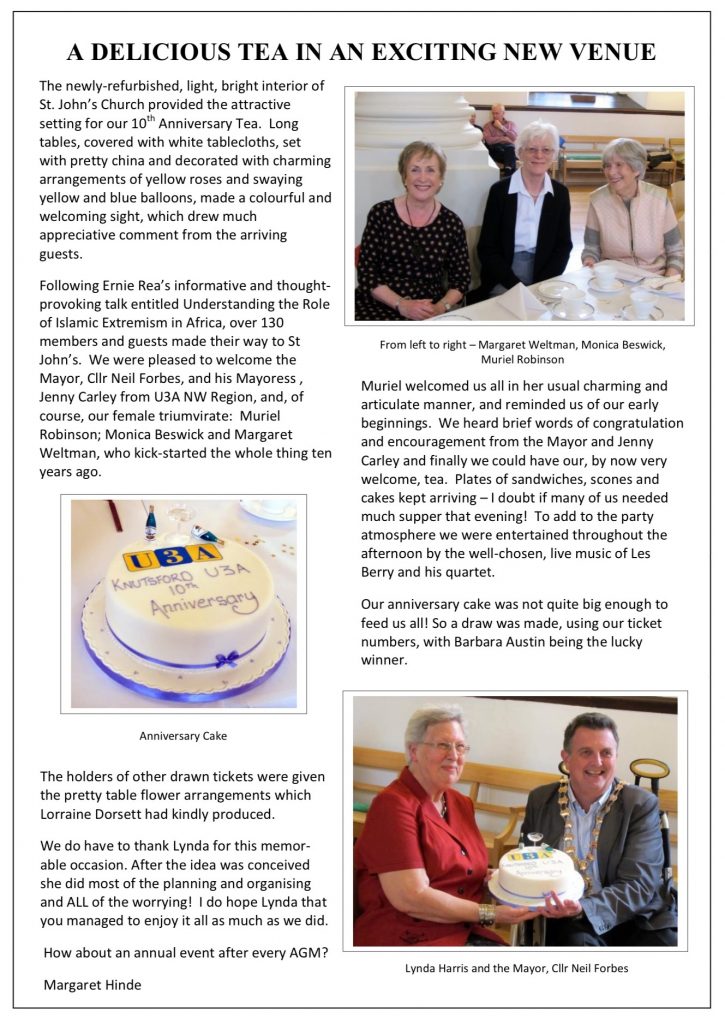
CALDWELL’S AND THEIR CUSTOMERS
Talk at the General Meeting, 8th January 2015
Barbara Moth gave a very interesting talk on the work of the Cheshire Gardens Trust, in particular their work to enable access and improve awareness of the inheritance of Caldwell’s Nurseries, Knutsford. Cheshire has a rich horticultural heritage. The county is fortunate that plant sales ledgers kept by Caldwell’s Nurseries are still extant in the archives. This family firm operated in Knutsford, from around 1759 until 1991, supplying plants not only locally, but also nationally and internationally. Barbara introduced us to prominent members of the Caldwell family through a collection of interesting photographs. She has also been able to identify via the ledgers that Caldwells has supplied remarkable and important plants to all the great estates around Knutsford. Today, in the town centre, there are still some marvellous examples of trees and shrubs from Caldwells (just have a look in Aldi car park.) There was great sadness amongst staff and customers when the business closed, now, no trace of it is left. However if you look carefully there is still some evidence on the ground of where the company used to be an important part of the Knutsford community.
David Goatman
VISIT TO JCB, ROCESTER
Thursday 30th October 2014
Photograph outside JCB Visitor Centre, supplied by Peter Butler and taken by his son
LEWIS CARROLL AND ALICE IN WONDERLAND: AN OVERVIEW BY SELWYN GOODACRE
Talk at the General Meeting, 11th September 2014
Dr Goodacre is a retired GP and past chairman of the Lewis Carroll society. He has been collecting Lewis Carroll and Charles Lutwidge Dodgson memorabilia all his life. The main purpose of his talk was to share some of the highlights of his collection with the U3A audience. Interest in Lewis Carrol and his Alice Books has never waned. New editions of the Alice Books in many languages are still being produced all over the world. The source of these books is a small tome written by Carroll called “Alice’s Adventures Underground”. This is one of two original texts of the story. As there is a degree of uncertainty as to Carroll’s original wording Dr Goodacre is now working on a definitive version of the text which is planned to be published in the US next year. We were shown some of Dr Goodacre’s collection of mathematical textbooks written by C.L. Dodgson. However, the highlight of his talk was to see how various illustrators have depicted the famous “Mad Hatter’s Tea Party” scene in the Carroll story. Alice was out of copyright in 1907 so the artistic floodgates could then be opened without impunity. There are now about 150 English Language illustrated book versions. Dr Goodacre is aware of most of them, and he selected over 30 pictures of the party that he considered were of particular interest, for us to enjoy. There is still a significant awareness of Carroll/Dodgson and his work by modern day collectors. As well the books, his original photographs and letters are keenly sought after. By means of his talk Dr Goodacre was able to acquaint us with the continuing interest in the man and his works which looks like it will go on for many years to come. David Goatman
GRITSTONE TRAIL WALK
June 2014
For photographs of the Gritstone Trail walk from Nelson Pit to Mow Cop, with members of Walking Groups 1 and 2, see the Walking Group 1 page
TRAVERSA – A SOLO 3000 MILE WALK ACROSS AFRICA FROM THE SKELETON COAST TO THE INDIAN OCEAN
Talk at the General Meeting, 12th June 2014
Fran Sandham is an acclaimed travel writer who was inspired by the deeds of Stanley and Livingstone to make his own contribution to African exploration. Following a brave new year’s resolution and 12 months fitness training in a book shop, Fran and his 100 lb rucksack landed in West Africa ready for the adventure of a lifetime. Walking in Africa is not without its difficulties. Fran had to learn how to successfully cope with snakes, man eating lions, bandits and drunken drivers along the way. His only insurmountable obstacle was trying to employ the services of a mule and donkey to carry his rucksack. This delayed him by nearly 3 months until he realised that none of his four legged friends were going to cooperate. The only sensible choice was to carry his considerable burden on his own back. A heavily laden Fran was still able to enjoy mixing with the locals and experiencing the sights and sounds of Africa. You’ll have to read the book “Traversa” to get the full picture. On completion of his adventure Fran had to consider what effect the whole thing had had on him. At the start he was excited but wary but by the end he was quite reflective and a bit sad as he was giving up a simple yet demanding way of life. David Goatman
IRONBRIDGE: BIRTHPLACE OF THE INDUSTRIAL REVOLUTION
U3A 2-Day Study Break in April 2014
This was advertised in the November issue of Third Age Matters. It was open to members nationally. I lost no time in applying. It was just as well as within days of the advertisement appearing it was oversubscribed. I joined my fellow 39 attendees on a sunny morning in April. The glass room where we met was a high ceilinged adapted space, very pleasantly modernised and fitted out for a study centre. The first talk was given by the resident curator; a fascinating slideshow of works of art relating to the earliest development of the industry around Ironbridge. He was particularly informative with his answers to the many subsequent questions, but to vary our learning we next had the opportunity to walk around the extensive sites of the iron museum, the Darby family house and the Quaker burial ground, where many of the Darby family are interred. The resident archeologist was our guide. He showed us the remains of industrial processes dating from 1709, aswell as domestic buildings indicating the living conditions for the workers and the ironwork owners. One particularly interesting point to emerge was the preponderance of Quakers in these successful industrial ventures. By dint of their religion these energetic and well connected young men were banned from university and public and civic offices. They could however apply their talents to engineering and industry eg. Cadbury and Fry Chocolate Companies, Clarks shoes, Hanburys Tinplate etc. The Darby family had an enlightened approach to their workers. Tee-total themselves, they nevertheless built public houses for their hot and thirsty workers and later created parks and woodland walks to encourage the male workers to walk with their families on a Sunday, rather than spend the day drinking in the pub. Although many Quaker employers did ban alcohol they often provided medical, dental and educational opportunities. We saw evidence of this at Coalbrookdale. Our second day was even sunnier. We started at the Coalport China Museum Site. We saw a potter creating flowers from clay and another making saggers before we entered an enormous bottle kiln. Again we heard riveting accounts of the industrial processes of old from enthusiastic and informative specialist guides. Our visit ended with an afternoon at BlistsHillVictorianTown. We left at 5pm but not until all the displays were closing. We had all enjoyed our 2 full days but it was not enough time to do justice to the many museums which make up the Coalbrookdale and Ironbridge Complex. We did however leave armed with an annual ticket so that we can return to see more of these wonderful sites and explore more of this very beautiful part of the country.
Pauline Hales
To see the above report with photographs included, go to Ironbridge report
AMBLERS GROUP – WALKING HOLIDAY TO GRANGE-OVER-SANDS
April 2014
Twelve members of The Amblers’ Group have just returned from a most enjoyable few days in the area around Grange-over-Sands where we had glorious weather. We met for lunch at Levens Hall last Tuesday, after travelling up in cars from Knutsford. We had a splendid walk of about three miles through the parkland, led by John and Ruth Funnell, before checking in at our rather exotic hotel where we had a delicious dinner in a private dining room.
On Wednesday we caught the train for a short journey to Silverdale where we had a good walk round Hawes Water. We visited the RSPB sanctuary at Leighton Moss where we had lunch and then walked along paths through tall rushes to visit hides where we watched many birds, including a marsh harrier standing on a tall dead tree trunk surveying the scene. As we returned to our hotel we felt a few drops of rain, but too late to spoil our day.
Thursday was another sunny day as we all left our hotel bound for Cartmel. This time the walk was led by David Cogger and we crossed the racecourse to climb up through bluebell woods with views across to the sea. Returning to Cartmel we sat outside in the sunshine to have coffees and then visited Cartmel Priory founded towards the end of the 12th Century. We drove to nearby Holker Hall for lunch before visiting the house, the magnificent home of Lord and Lady Cavendish. We followed this by a visit to the gardens which were spectacular with rhododendrons, tulips and wallflowers in full bloom.
Our final dinner was as delicious as usual, after which we all sat around together in an atmosphere of great hilarity. Thanks were given to John, David and Sheila for making our trip such a great success.
There was, however, one last morning before we left for home when we had our final walk around Sizergh Castle. We walked up to St. John’s Church at Helsington, miles away from anywhere but beautifully kept and from which we had fantastic views. We then walked back through fields of sheep with their little lambs enjoying the Spring sunshine before joining up for our closing lunch together. The sky was beginning to darken and soon after leaving the Heavens opened and we set off to drive home in torrential rain – obviously sad to see us go!!!
Margaret Oliver
Photographs from Ambler’s Holiday 2014
AMBLERS’ SONG, April 2014
We love to go wandering
The Amblers love to ramble
through field or river valley
On gentle slopes we know the ropes
And move convivially.
The country lanes are easy walks
we stride along with vigour
The passing cars are fine for us
But we want nothing bigger
On steeper slopes we take our time
Admiring the views
Once on top we pause a while
And hope for handy pews.
To see a STILE across the way can be an awful shock
But Amblers will walk along as steady as a rock
Approaching it with confidence there is no need to worry
we all get over bit by bit and are never known to hurry.
When in the pub at last we rest
And sip a well earned drink
The chat goes on apace as well
Which shows we still can think.
CELEBRITY ARTIST VISITS U3A GROUP
27th March 2014
Members of Art Appreciation 1 were thrilled and excited, when they had a surprise visit by artist Grayson Perry at their March meeting. Grayson (aka Tim Donelly) had come to talk to the group about his ceramics, and was resplendent in his glamorous outfit, a pink and navy spotted skirt with a stylish white blouse, and his blonde curls were enhanced by fetching pink ribbons. The whole ensemble was accessorised by navy tights and trainers and a pink and black parasol. Grayson, with the help of his partner and muse, Margaret Cole, enthralled the group with slides of his famous ceramic pots which fascinated us all, or perhaps it was just the sight of those bobbing pink ribbons…….. Sadly Grayson could not promise a return visit, but we are now in negotiations with Grayson about the publication of a photo of him at our meeting. We are hoping to secure exclusive rights to publish this in the next edition of Kanuta. Watch this space!

